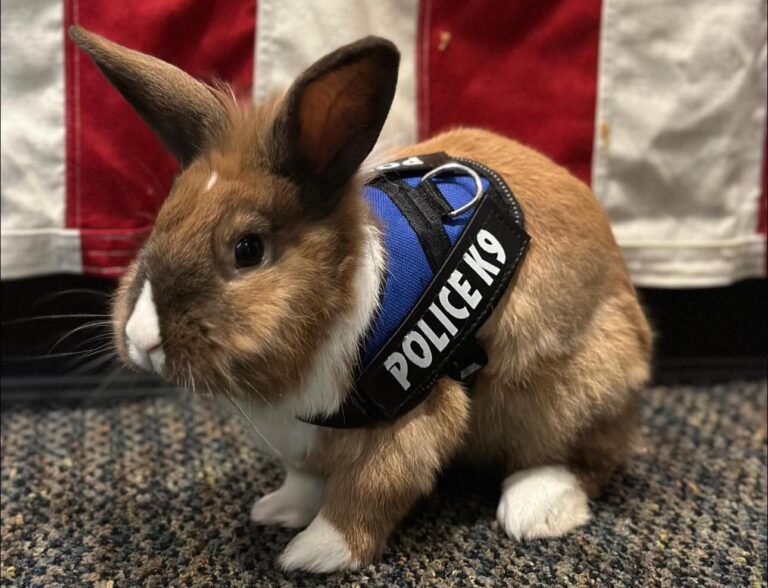When most dogs jump into the back seat of a car, they excitedly pop their head out the window, eager to take in a tail-wagging display of new sights and smells. So it may seem odd that Midge, just shy of 3 years old, instantly nodded off. But for this young pup, a car ride this past spring meant much more than an exciting adventure. Her caretaker’s vehicle provided a comfortable, quiet space to sleep — a luxury she’d rarely experienced since arriving at the shelter, where the constant din of other dogs’ barking kept her awake.
While animal shelters strive to give pets the best possible care, many furry residents find their new environments quite stressful. But the good news is that even a small break from a shelter can significantly improve the animals’ well-being, and even help them get adopted. Enter Dog Day Out programs, in which volunteers give shelter animals like Midge a taste of freedom and lots of love.
“These programs are game changers for pets in shelters. Time away from a shelter environment gives dogs and cats the chance to decompress and explore life outside of their daily routine, helping them get ready for life in a home,” Julie Castle, CEO of Best Friends Animal Society in Salt Lake City, told Nice News. “Even just a few hours away can make a world of difference for a pet’s confidence and happiness.”
Best Friends Animal Society’s Adventure Buddy and foster weekend programs are just two examples of such initiatives, which have become popular with shelters and welfare organizations nationwide. Details vary from one organization to another, but activities can involve anything from cozy couch snuggles to grand adventures. Some organizations even have special pet-friendly accommodations, like the Best Friends Roadhouse and Mercantile, where volunteers can spend the night with their companions. And while most cater to canines, some are also open to cats.
“While we do everything we can to provide enrichment, love, and engaging activities for shelter pets in our care, we know that nothing is quite the same as being in a home environment,” explained Jordan Frey, marketing manager at San Diego Humane Society, one of several national Humane Society locations offering a Dog Day Out program.
@neenib I Gave A Shelter Dog The BEST DAY EVER 🥹❤️🐕
♬ original sound – NK
These outings can also provide shelter staff and volunteers with a clearer picture of pets’ personalities, preferences, and behavioral tendencies, which can help them increase their chances of adoption. According to Tufts University, being separated from their previous family and spending time in a shelter — where confinement, boredom, and noisiness are often the norm — may cause animals to behave differently than usual. For example, some may hide in the back of their kennel and become lethargic, while others may become more vocal or even destructive in response to the stress. As a result, caretakers and visitors may not have an accurate picture of an animal’s personality.
Volunteers can lend a hand by noting animals’ behaviors and reactions to different environments, and relaying this information to shelter staff. For instance, a dog may be great with kids or remain calm in a busy café. “The insights we get from outings are invaluable and often key to helping pets find a loving home,” Castle said.
Additionally, volunteers often take photos and videos during the outings, which they and shelter staff can post to their websites and social media channels. Frey says this can help introduce animals to the public and showcase their unique characteristics.
@aguyandagolden From shaking, to sleeping like a king. Meet Paulie, a 1 year old mix at @Greenville Humane Society . Paulie was one of the best dogs I’ve ever featured in the car, and knew tricks too! He’s been in the shelter for months, who’s going to real him out for good? #dog #fogsoftiktok #shelterdogsaturday
♬ original sound – AGuyandAGolden
That may be one reason why animals who spend even a single day out of the shelter are 10 times more likely to get adopted, according to VCA Charities — including Midge, who found a loving family after a tear-jerking video of the sleepy pup made the rounds online in March. “We have even seen some examples of volunteers falling in love with a dog during this day together, and choosing to adopt them, which is the greatest outcome we can imagine,” Frey shared.
Even when a volunteer doesn’t adopt, the outings can be just as rewarding for them as for their four-legged friend, according to Castle. “For those who love pets but aren’t ready to bring one home just yet, it’s the perfect way to enjoy the companionship of a dog or cat while contributing to pet lifesaving in your community,” she said. Frey agreed, noting that “there’s no denying the benefits a wagging tail, slobbery kisses, and quality time with an animal can bring.”
If you’re interested in volunteering, check out the VCA Charities, Best Friends Animal Society, or Humane Society websites, or contact your local animal shelter to find out if they offer outings. Most programs are open to adults 18 and over with a valid ID (though younger family members are welcome to join, too) and provide all the necessary supplies. Per Castle: “You don’t need to be a seasoned pet professional or have years of volunteer experience — just an interest in helping homeless pets.”
RELATED: Meet the “Doggie in a Diaper”: A Special Needs Rescue Pup Whose Legacy Is Promoting Animal Adoption












